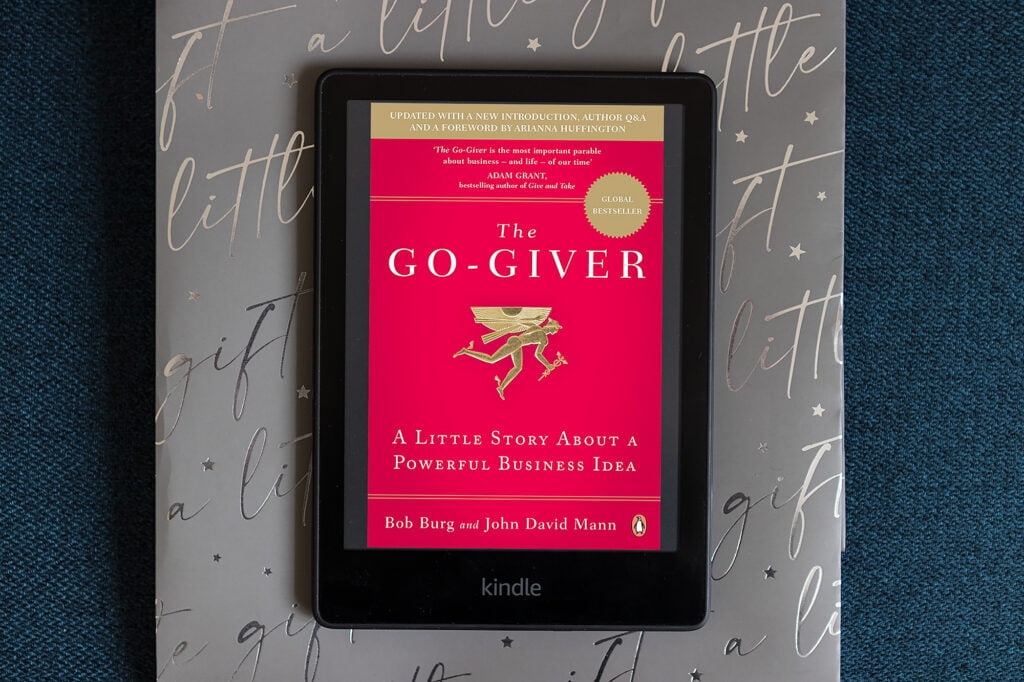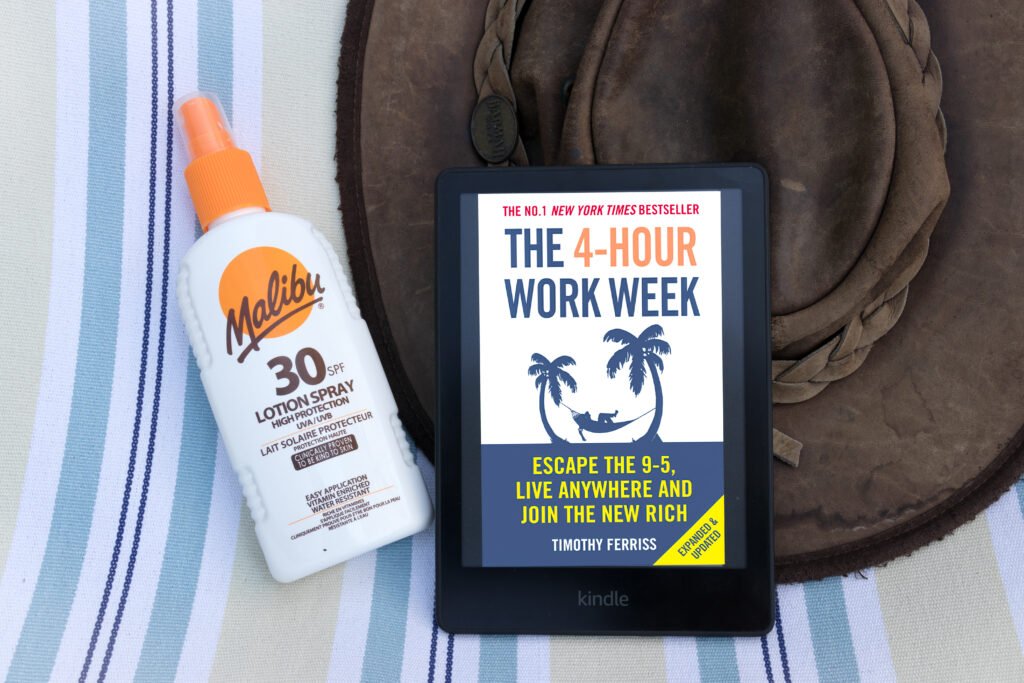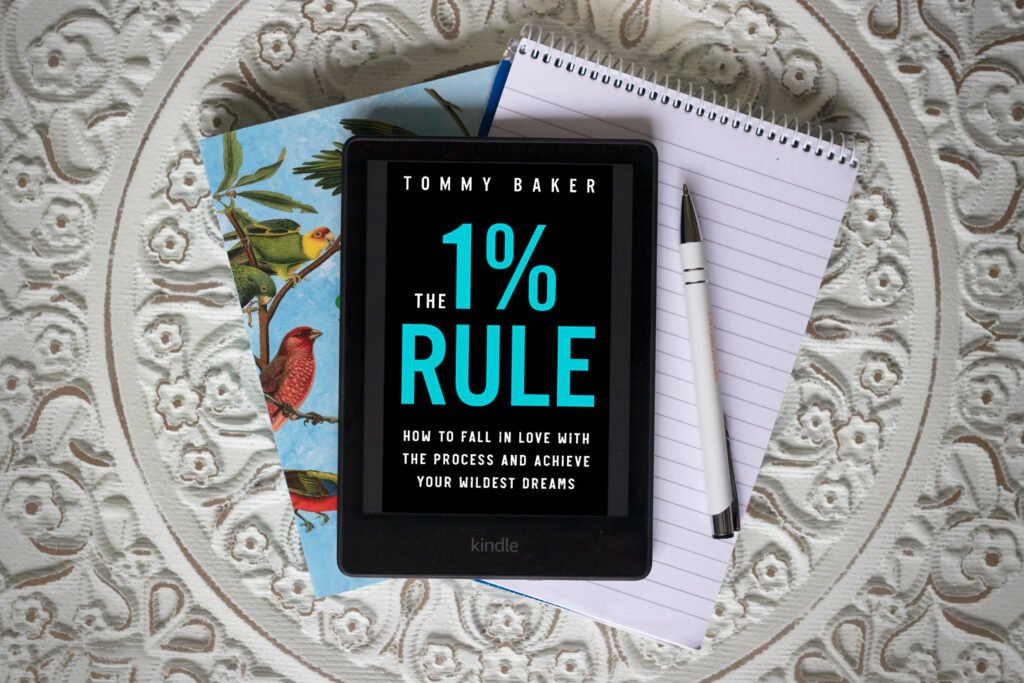
Three Sentence Summary
Learn how to harness the power of habits to ensure daily progress for bringing your aspirations to life! This book teaches how habits are formed and key strategies for implementing and breaking them. Whatever your goal is this book can be a great first step to behavioural change and so changing your identity for the better!
Table of Contents
ToggleMy Top 3 Take Aways
- Aim for identity change not the outcome as this is the most effective way for lasting change. If you have beliefs that align with your goals you’re more likely to be successful.
- Make habits easier to start by changing your environment, adding it on to existing habits or adding a reward to the end of your habit.
- Never miss the habit twice. If you forget to do it ensure you do It the next time to reinforce the habit.
Who Do I Recommend This Book For?
Simply put, if you are serious about changing for the better, this is for you. If you have goals you don’t follow through with, routines you can’t stick too or a bad habit you just can’t quit, give this a go. It just might change your life.
Full Summary
What is a Habit?
Before trying to change, add or stop a habit we first need to understand what one is. ‘Habits are, simply, reliable solutions to recurring problems in our environment’ and because they are reliable we have repeated them so much they have become automatic. They form the basis of who we are forging our identity therefore, as the author states, ‘The most practical way to change who you are is to change what you do’.
Creating Your Desired Identity
Goals are great but the way we create them is usually not beneficial to us setting us up for failure or slower progress. This is because we focus on an outcome then figure out a process of how to get there. This is a good start but it doesn’t take into account a change in identity. Identity change results in long term, lasting change because there is a shift in belief behind the behaviour. This change in mentality is so beneficial to have especially when you undoubtedly have a bout of imposter syndrome. This belief shift gives you more motivation to improve and allows you to build processes and habits which will subsequently deliver the outcome you initially set as a goal. Next time you set yourself a goal don’t think ‘I want to reach this outcome’, think ‘I want to become a person who does this’. Aim to change your identity.
Habit Scorecard
Getting a handle on our current habits is very important before setting out to start new ones. Therefore we need to bring all our habits to light first. As with anything new getting started can be daunting especially if you don’t know where to begin. The habit scorecard is the simple way to identify then go on to improving your habits.
Firstly list all your habits as you go through your everyday routine. Simply observe what your doing, pay attention to it. Don’t make yourself do anything you wouldn’t normally do and don’t stop yourself doing things, it’s all about honesty. Create a realistic snapshot of a normal day in the life. Maybe even do this over a week to see what is truly habitual.
Once you have your list, write next to each habit the effect it has on your progress to your desired identity. Either positive, neutral or negative. Although this works better with a specific goal in mind, it can also be used to identify general bad habits. Now once you’ve identified the negative you can begin to think how to eliminate them or replace them with more beneficial ones. This gives you a great launch pad for progressing to your goals.
How are Habits Formed?
Habit Creation in Four Steps
The first three steps result in a behaviour but the fourth results in it being repeated. By understanding how habits are created we can use the knowledge to our advantage to stop the bad and enforce the good.
The Four Laws of Behavioural Change
These laws have been created in response to the steps of habit creation and target them in order to help create or break the habit. When creating a habit ask yourself how you are going to apply each law and you’ll put yourself in the best position to succeed!
For each law I have summarised the two techniques which best resonated with me although there are more described in the book so another reason to pick up this book and read it for yourself!
1. Make it Obvious/Invisible
By making the ‘cue’ of the habit either obvious or invisible you can make it that much easier to stop or start a habit. Two strategies are habit stacking and changing your environment.
After [CURRENT HABIT], I will [NEW HABIT].
By stacking multiple habits together or inserting it into a current routine we can build the cues for our new habit quicker. This also gives it a regular time and location which helps reinforce the habit.
Click for examples →
After [CURRENT HABIT], I will [NEW HABIT].
Examples:
- After getting out of bed I will make my bed.
- After making my bed I will do some yoga.
- After yoga I will have a cold shower.
- After getting home from work I will change into my running clothes and go for a run.
- After brushing my teeth in an evening I will read a book.
Create yourself an environment that gives obvious cues to do the tasks and habits you set out. Humans often go for the most obvious and easiest choice so by ensuring your cues are in plain sight you're more likely to do it. Remove the cue if you wish to break the habit.
Click for examples →
Ensure cues are in plain sight or removed completely.
Examples:
- Leave running/exercise clothes and shoes out for when you get back from work.
- Ensure fruit is in plain sight and snacks hidden so more fruit is eaten.
- Leave your book on your bedside table so you read before bed.
- Implement with habit stacking by leaving the cue or a sticky note where you perform the current habit.
2. Make it Attractive/Unattractive
The ‘craving’ of a habit can be made more attractive so it is performed or less attractive if the habit needs to be broken. Two strategies are temptation bundling and the changing the circle you keep which build upon the prior two strategies.
As I [HABIT I LOVE], I will [HABIT I NEED TO DO].
Dopamine is the hormone that signals for pleasurable rewards and motivation. It is released when you experience pleasure and when you anticipate it. Its the anticipation that gets us to take action, not the fulfilment. If you do something you love doing at the same time as something that you need to do you can make it more attractive. This link creates a cue next time you do the enjoyable thing making it more likely to become habit.
Click for examples →
As I [HABIT I LOVE], I will [HABIT I NEED TO DO].
Examples:
- As I come back from a run I will take the rubbish out the house.
- As I cook I will wipe down the surfaces.
- As I'm brewing my morning coffee I will take my medication.
- As I listen to my favourite podcast I will hoover the house.
Your Circle
Who you surround yourself with and the media you consume helps create a normal culture around you. If you surround yourself with people who have the habits you want, you are more likely to be successful. This acts as an extension to changing your environment making it more amenable to positive change.
3. Make it Easy/Difficult
The part of the habit you recognise is usually the ‘response’ by actively making this action easier or more difficult you can change the effectiveness of a habit. Two strategies are to perform consistent repetitions and the 2-minute rule to beat procrastination.
Get Your Reps In
Failing is the best way for improvement as we learn each time how to perfect the process. We can be so focused on finding the perfect solution we never take action and so it can be best to just do the task. The outcome will make the process more enjoyable when we look back and see how far we’ve come and the criticism that we have overcame. Even professionals have days of lacklustre motivation but if you are able to still turn up and be consistent, that’s where the results come from. In order to turn these reps into a habit you need to being doing it frequently rather than over a long period of time.
The beginning of a habit should take a maximum of two minutes to do. Break the habit down into multiple steps with the first being less than two minutes. You’ll then be more likely to continue what you’ve already started. We can also reduce the friction of starting by preparing our environment before thus creating a path of least resistance whilst establishing a cue. This is the mastery of showing up which allows you to get the frequency in that is required for change.
Click for examples →
Break the habit down into multiple steps with the first taking less than two minutes.
Examples:
- Instead of write an article, write one sentence.
- Instead of do some stretching, get out your yoga mat.
- Instead of do a 5km run, tie your shoe laces.
- Instead of read for 30 minutes, read a page.
4. Make it Satisfying/Unsatisfying
The final law relates to the ‘reward’ aspect of habit creation and by adapting how satisfying the reward is the chance of repeating a habit subconsciously can be increased or decreased. Several strategies are immediate rewards, habit tracking habit recovery and having an accountability partner.
After [CURRENT HABIT], I will [TRACK MY HABIT].
In order to create our feedback loop we need to make sure the rewards are immediate to encourage repetition. This is called reinforcement. Tracking your habits by ticking off, recording or crossing it out can act as this reward system. Your progress is obvious and the cue of looking at your habit streak will make continuing more attractive. Implement the habit stacking method to add in the tracking to your habit!
Click for examples →
After [CURRENT HABIT], I will [TRACK MY HABIT].
Examples:
- After avoiding an unnecessary purchase, I will move the monetary value of the item value into a savings account.
- After completing my morning run I will tick it off my daily to-do list.
- After eating my meeting my healthy eating goals for the day I will add a sticker to my habit tracking sheet.
The simplest rule is to never miss twice. If you break your streak ensure the next time you go to do it you don’t skip it again. The spiral of not doing is what will result in the failure of your good habits. Assigning a accountability partner can also stop failure as knowing that someone else is watching your progress results in more motivation as you will be letting them down as well. You can also make up a physical contract with real consequences to cement us to sticking to our habit.
Click for examples →
Examples:
- Telling a family member about your goal and keeping them updated on a weekly basis.
- Posting your goal and its progress on the internet either through social media or on a blog.
- A formal contract with a partner where every time you miss the habit you pay them £1.
- Other consequences could be confiscating a gaming console, hiding your favourite snacks, having to do additional chores or having to watch whatever they want to watch on TV. Whatever is important to you is a good place to start for a consequence.
The Downsides of Habits
Habits are brilliant but once in place and the automation takes over there is evidence that you will actually start to dip in performance as slight mistakes creep in due to it being an unconscious action. If however you want to progress you need to ensure you are finding these areas to improve and putting focus on removing these mistakes. We can find these areas to improve by having reviews of our progress twice a year and seeing how these habits are benefiting you. Habit tracking makes this easier to assess as well as setting goals with measurable characteristics. In the end it comes down to a simple formula: Habits + Deliberate Practice = Mastery.
Making it Actionable!
I picked up this book after the You Tube hype from a lot of channels in the productivity niche. What I wanted was to improve my own habits by making them more consistent. Before reading I thought I was at a level where I can name my bad habits on one hand but this book showed how much better I could optimise my routine to make progress. A prime example of ‘not knowing what you don’t know’. This is my main motivation to continue learning even after formal education. The key things I want to iron out are procrastination and to make my routines more habitual, no matter where I am or the day of the week. What I struggle with is cementing habits, how to progress them and how to put ideas into action. The strategies given definitely aided in progressing to these goals whilst also exposing cracks in the foundations of my current habits which needed correcting.
One main area where these principles have already aided me is with this blog. I have always enjoyed writing and creating my own notes on books I have read came as second nature. I wanted to maintain this habit and so created this blog as something tangible to maintain and give me a sense of accountability. Therefore you have this book to thank for the creation of this blog! From now on whenever I start new habits and goals I will use these principles to help bring my aspirations to life!
If you’ve read this book already I’d love to know your thoughts and how you’ve implemented its strategies. Let me know down below!



